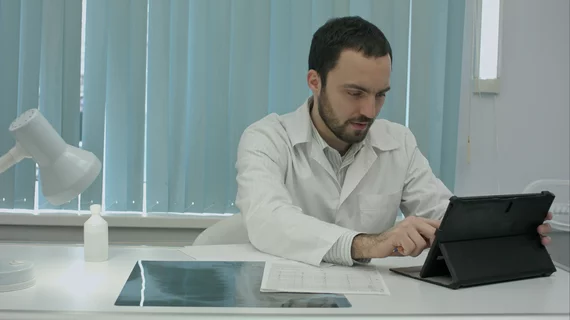3 reasons Canadian radiologists may experience more burnout than US counterparts
Canadian researchers discussed the growing epidemic of burnout in radiologists in a recent article in the Journal of the American College of Radiology.
“Although most commonly described in the United States, burnout in radiology is a global phenomenon that threatens the ability of the specialty to recruit, retain, and offer the highest quality imaging care,” wrote lead author Nanxi Zha, MD with the department of radiology at McMaster University in Ontario, Canada, and colleagues.
Radiologists and residents in Canada recently reported higher rates of burnout due to emotional exhaustion and depersonalization compared to those in the U.S. The authors discussed potential causes for those rates and compared them to their American counterparts.
1. Increasing workload
Scanners have become less expensive, access to imaging has proliferated and patients frequently undergo in-depth investigations due to inconclusive results, the authors argued. As a result, workloads in Canada have jumped by 26 percent over the past 12 years—but the radiology workforce has not grown in similar proportions.
In the country there are about 6.9 radiologists per 100,000 residents, compared to 10.8 in the U.S.
“That relative shortage of radiologists in Canada thus limits the implementation of such best practice burnout prevention strategies, potentially exacerbating the emotional exhaustion and depersonalization already present in the radiology workplace,” the authors wrote.
2. Market woes
Zha and colleagues cited rising medical school tuition and the high cost of urban living alongside stagnant salaries—specifically in Ontario—as a cause of financial strain for early-career radiologists.
Additionally, a slumping employment market in which 13 percent of Canadian radiologists reported primarily working in a private practice, compared to the 53 percent in the United States, are possible burnout factors.
3. Academic isolation
The average Canadian academic radiologist spends four hours a week dedicated to research and professional development compared to the one day per week recommended by a recent U.S. study, according to the authors.
This lack of time for new ideas contributes to fatigue and emotional exhaustion symptoms, Zha et al. noted.
Looking ahead
Radiology trainees are particularly vulnerable to burnout and therefore radiology must provide proper guidance for this group.
“Mentorship with seasoned staff radiologists should thus extend beyond traditional educational goals, to additionally promote strategies to facilitate work-life balance and clarify career trajectories,” they added. “Regardless of country, however, the solution to burnout begins with symptom recognition, and changes within radiology practices—and the specialty more broadly—should be prioritized.”

